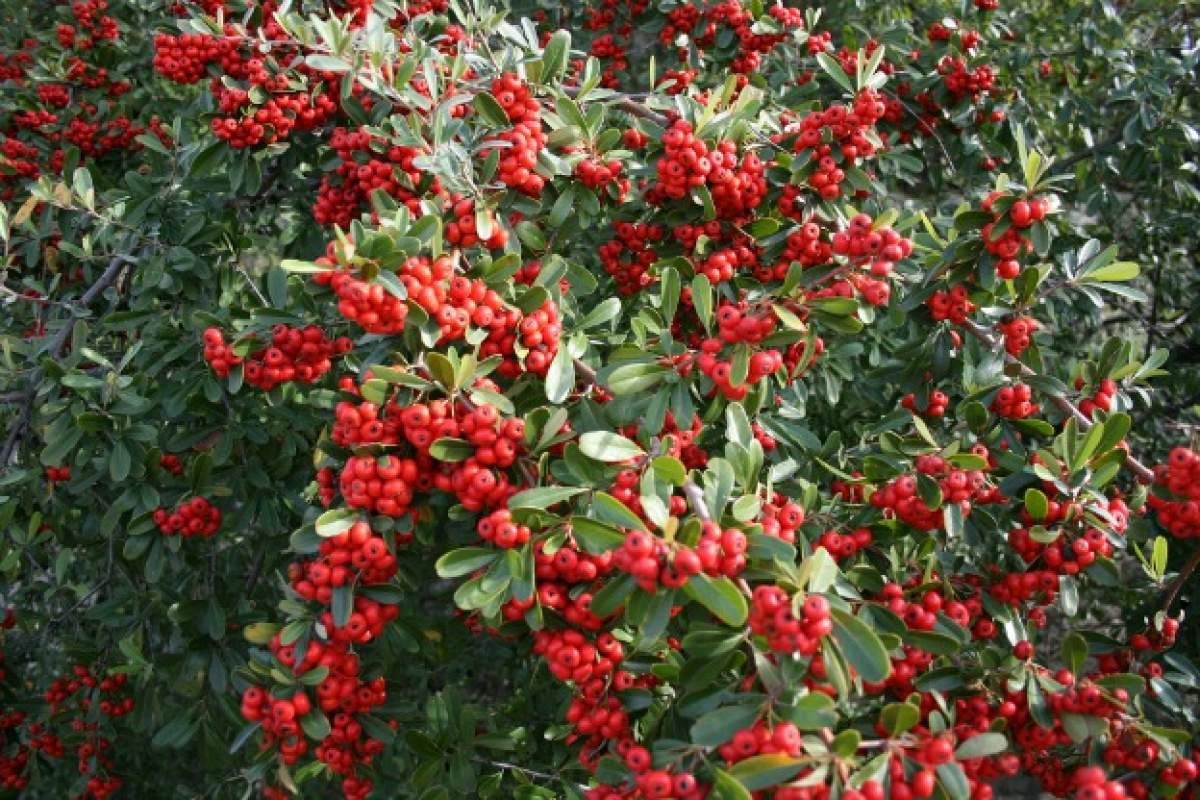
Pyracantha is a shrub with evergreen glossy foliage and broad spreading growth. One disadvantage is its thorns, thus the common name of firethorn. Also, it's susceptible to a bacterial disease called Fire Blight, characterized by die back so the plant looks as if it has been burned by fire.
It has white blooms in the spring but is grown mainly for the bright orange-red berries each fall. It is a vigorous plant and will grow 12 feet high and as wide with thick, rigid spiky stems. If not devoured by the birds, the fruits remain all winter to brighten the landscape.
Pyracantha plants are deep rooted so those available for sale are usually small as large ones are harder to transplant. Pyracantha species can be espaliered, which means trained to grow flat on a wall or trellis. They can also be used in an informal hedge or as a foundation plant.
‘Fiery Cascade' is a low-growing cultivar 3 to 4 feet high and 5 feet wide and is disease resistant and hardy to 0 degrees F. ‘Rutgers' is another good cultivar, also developed by Dr. Elwin Orton of Rutgers University, and it is hardy to -5 degrees F. Both of these are resistant not only to Fire Blight but also to Apple Scab, which also turns the leaves and berries black.
All firethorns may be planted in spring or fall in any sunny location where there is ample space for growth. The Princeton University campus has striking examples of plantings of these shrubs.
Reference: Shrubs Large and Small by Moya Andrews, illustrated by Gillian Harris, 2013.









